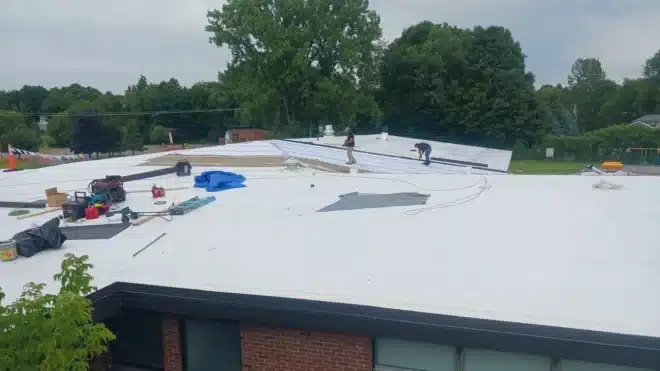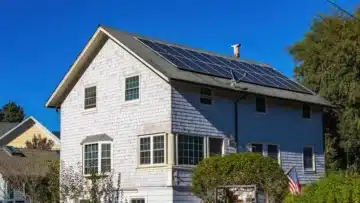Installing a commercial roof is a significant investment for any business. Understanding the steps involved can help streamline the process and ensure a successful project. Here’s a breakdown of the essential steps in commercial roof installation to guide you through it.
Step 1: Assessment and Planning
Evaluate the current roof condition and identify any specific needs based on the building’s structure and usage.
This initial assessment is crucial, as it helps you understand the extent of damage, if any, and how it will impact your installation timeline. In some cases, your roof might simply need minor repairs, while in others, it requires a complete overhaul.
Consideration of safety measures during assessments is also essential. Be sure to discuss any concerns, such as the presence of hazardous materials or seasonal weather effects, with your contractors.
Planning is not only about understanding the existing roof. It also involves considering local regulations and determining your roofing budget, ensuring that you can move forward without any financial surprises.
Step 2: Choosing the Right Materials
Select materials that align with your budget, climate considerations, and desired roof type, like TPO, PVC, or EPDM.
The choice of roofing materials significantly affects the durability and energy efficiency of your commercial roof. Each option has its pros and cons, making it essential to do some research and possibly consult with an expert.
For instance, TPO is popular for its energy efficiency, while PVC is known for its longevity and resistance to harsh weather. Weighing these options will help you make an informed decision.
Also, consider the aesthetics of your materials. A roof isn’t just functional; it can also enhance the visual appeal of your business premises, adding value in the long run.
Step 3: Engaging Qualified Contractors
Hire experienced roofing contractors who specialize in commercial installations to ensure quality workmanship.
Finding the right contractor can feel overwhelming, but it’s vital for the success of your project. Look for professionals with multiple years of experience and positive reviews.
Don’t hesitate to ask for portfolios of previous work to gauge their quality. Engaging contractors who understand local building codes and regulations can save you from potential headaches down the line.
Communication is key. A good contractor listens to your needs and offers insights based on their expertise. Establishing a strong working relationship from the start fosters a smoother installation process.
Step 4: Installation Process
Follow through the demonstration of the installation process, including removal of the old roof, preparation, and fitting the new materials.
This phase is one of the most critical parts of your commercial roof installation. Expect to see the removal of old materials followed by thorough preparation of the existing structure. Proper preparation is vital for the longevity of your new roof.
During installation, your contractor will closely monitor the weather conditions to avoid any complications. Additionally, they will also ensure that safety protocols are in place for workers and passersby.
As work unfolds, stay engaged and don’t hesitate to ask questions. Being part of the process ensures you understand what to expect and helps you make informed decisions if any adjustments are necessary.
Step 5: Final Inspections and Maintenance
Conduct a thorough inspection once the installation is complete and establish a regular maintenance schedule to prolong the roof’s lifespan.
The final inspection is your opportunity to ensure everything was done according to your expectations and applicable standards. Don’t rush this step; take the time to review the work meticulously.
Additionally, setting a regular maintenance schedule is crucial. Periodic inspections and maintenance work, such as cleaning debris and checking for wear and tear, can significantly increase the life of your commercial roof.
Finally, keeping detailed records of any maintenance work done can serve as a valuable resource for future inspections and also benefits your budget planning for upkeep.
Wrapping Up Your Commercial Roof Installation
By following these key steps, you’ll be well on your way to a successful commercial roof installation. Remember that working with experienced professionals can further enhance your project and ensure that your new roof meets all standards and expectations.



